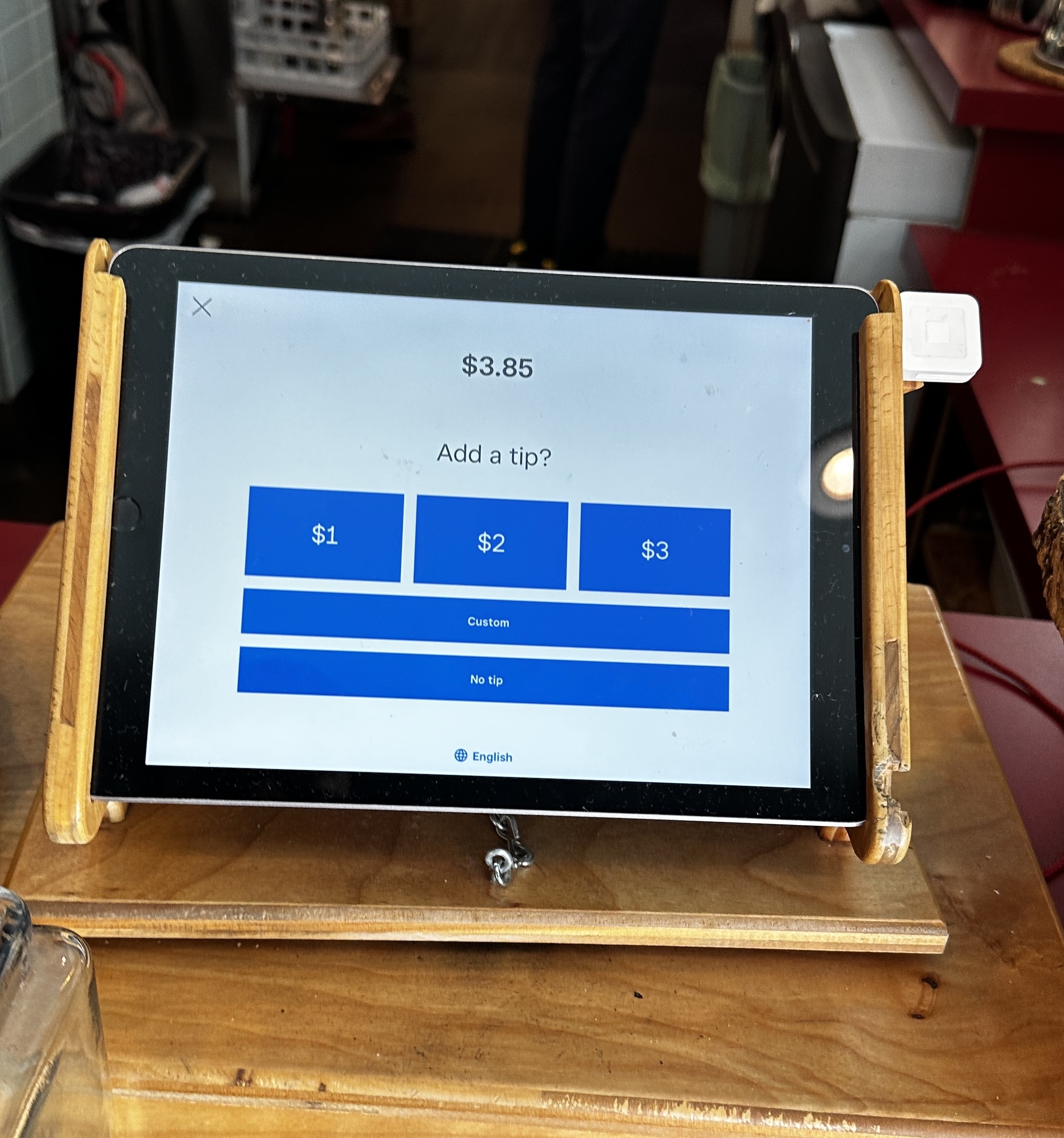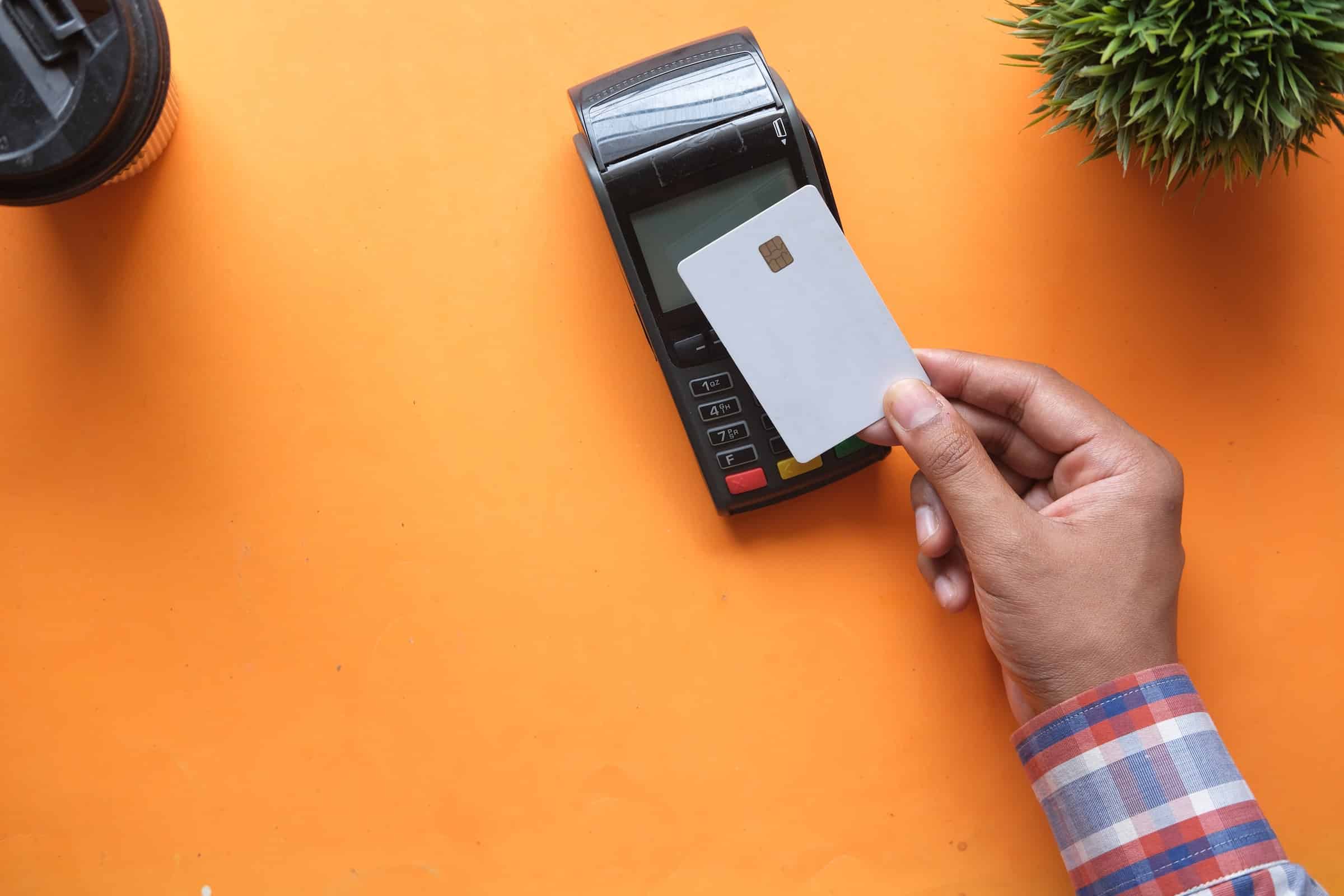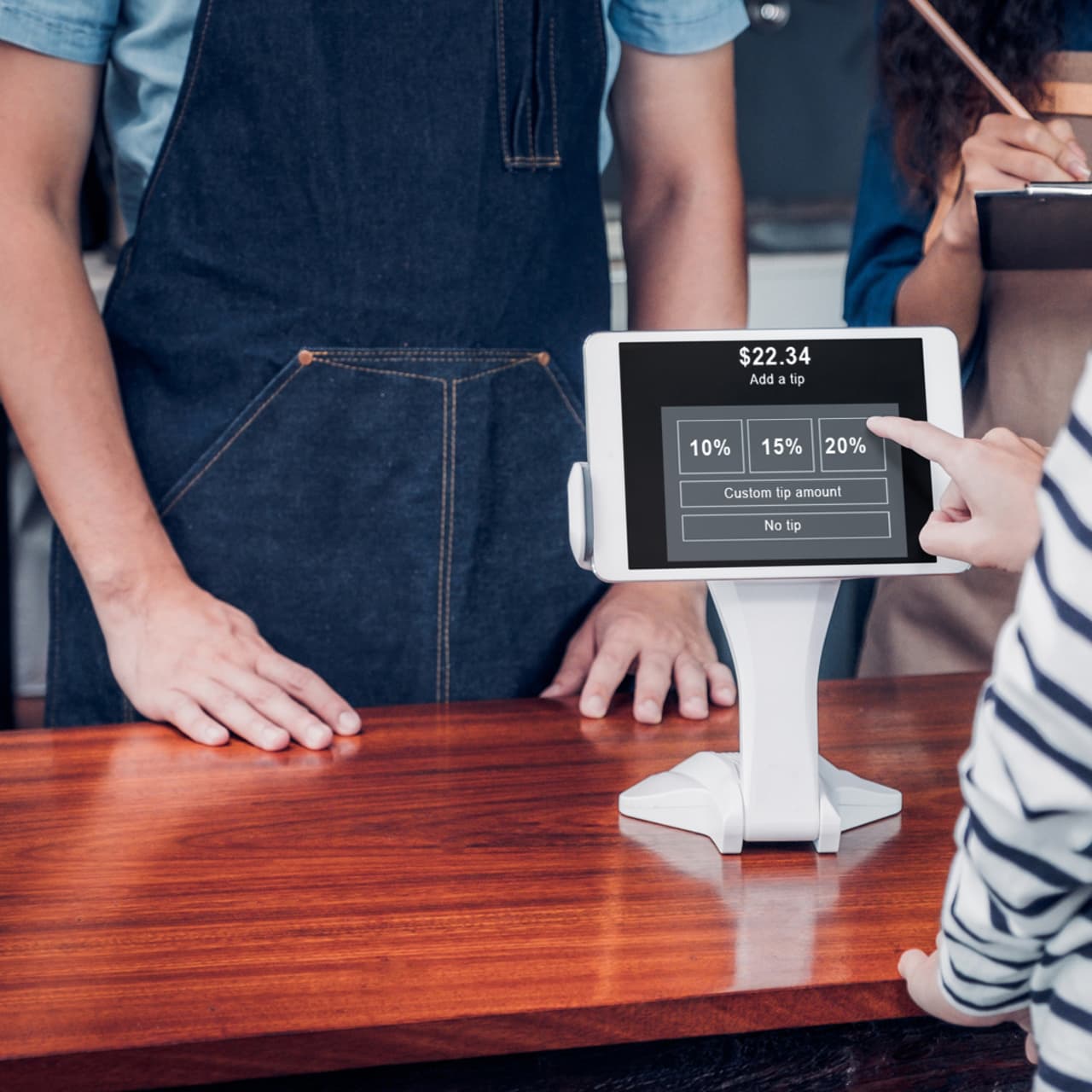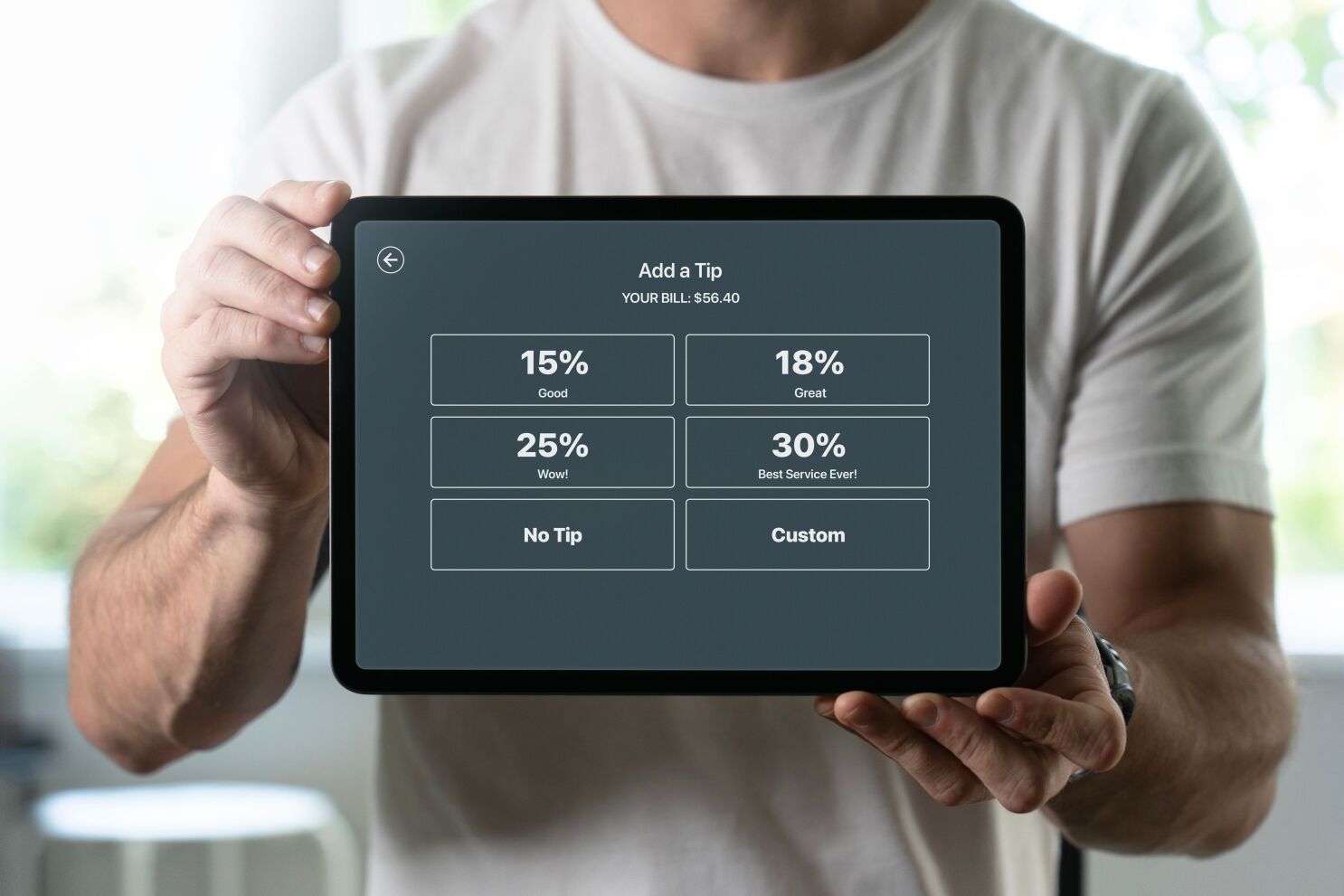
Tipflation, a term gaining traction in the current consumer landscape, refers to the increasing prevalence of tip requests in various unexpected or unconventional settings. This phenomenon has sparked discussions and debates, with many expressing surprise and even frustration at the expanding scope of tipping.
From online purchases to drive-throughs, the traditional practice of tipping has extended beyond its customary domains, prompting questions about when and where it is appropriate. Some view this trend as an unwelcome intrusion into everyday transactions, while others emphasize the importance of recognizing and rewarding service.
The concept of tipflation intersects with broader conversations about compensation, etiquette, and consumer behavior, reflecting evolving norms and expectations in the modern economy. In this article, we will discusswhat is tipflation?
Factors Contributing To Tipflation
Economic Factors - Inflation And Rising Costs Of Living
Tipflation, a phenomenon where tipping percentages steadily increase, is significantly influenced by economic factors like inflation and the rising cost of living. Inflation, characterized by a general increase in prices and a fall in the purchasing value of money, directly impacts consumer spending habits.
As the cost of goods and services rises, the baseline for tipping also shifts upwards. For instance, a standard 15% tip on a restaurant bill becomes substantially higher in monetary terms when the prices of meals increase due to inflation. Additionally, the rising cost of living compels consumers to reconsider their discretionary spending, which includes tipping.
However, this does not always result in reduced tipping; instead, there’s a nuanced response where customers may tip more generously, recognizing that service workers are also facing the same economic challenges.
Social And Cultural Factors - Evolving Norms And Expectations
The social and cultural landscape significantly shapes tipping behaviors, contributing to tipflation. Tipping, traditionally viewed as a reward for good service, is now increasingly seen as an obligatory social norm in many cultures, especially in countries like the United States. This shift is partly due to a growing awareness of the financial struggles faced by service workers who often rely heavily on tips to supplement their incomes.
Social expectations have evolved, with many consumers feeling a moral obligation to tip more generously. Media influence and societal discussions about fair wages and economic equity in the service industry further amplify these changing norms, leading to higher average tipping rates.
Technological Influences - Digital Payment Systems And Apps
The advent of digital payment systems and apps has played a pivotal role in the rise of tipflation. These technologies often suggest default tipping options, which are typically set at higher percentages than the traditional 10-15%. For example, a payment app might suggest tipping options of 18%, 20%, or 25%, subtly nudging customers towards higher tips.
Moreover, the psychological effect of digital transactions can lead to higher tips; when customers don't physically handle cash, they may be less aware of the actual amount they are tipping. This 'out of sight, out of mind' mentality facilitates more generous tipping.
Additionally, the convenience and speed of digital transactions remove the barrier of calculating a tip, often resulting in customers selecting the default or higher tip options with little deliberation.
The History Of Tipping
Although tipping's exact origins are unknown, records indicate that it was common in Tudor England from 1485 until 1603. In those days, visitors would give gratuities to their host's slaves for attending to their needs while they were there. In order to encourage patrons to leave tips for speedy yet excellent service, "to insure promptness (TIP)" boxes began to appear in English coffee shops and inns in the 19th century.
Rich Americans started leaving tips after their trips to Europe to demonstrate their familiarity with the customs of the other side of the world. Some claim that the Civil War's surge in low-wage labor contributed to the expansion of the tipping habit.
Nowadays, the majority of tippers are those who make the federally mandated tipped minimum wage of $2.13 per hour. Employers are required by law in some areas, including California, to pay the entire statutory minimum wage before tips. Established in 1966, the federal tipped minimum wage is distinct from the average minimum pay for non-tipped workers.
In essence, the employer may pay the tipped minimum wage if the employee receives gratuities totaling more than $30 per month. It is anticipated that tip money will augment that salary, allowing employees who get it to make at least the regular federal minimum wage of $7.25 per hour. The employer is required to make up the difference if an employee's tips fall short of what the federal minimum wage for untipped workers is, which is $2.13 per hour.
Regardless of whether employees get the ordinary minimum wage or the tipped minimum wage, tipping is already customary in many service-related businesses. These include, among others, baristas, drivers, delivery personnel, valets, porters, hair stylists, and servers and bartenders in restaurants.
Impact Of Covid-19 On Small Businesses And Tipping Trends
Tipflation originated during the COVID-19 pandemic in the United States. The pandemic's restrictions, such as stay-at-home orders, had a profound impact on small businesses, particularly in the restaurant industry.
As a response, customers began tipping more generously, supporting these businesses and their lower-wage workers during this economically challenging time.
Influence Of Digital Payment Systems And Digital Tip Jars
The rise of digital payment systems significantly contributed to the growth of tipflation. Fintech firms such as Square (a Block subsidiary) and Toast and Clover (a Fiserv subsidiary) developed technology that enabled small businesses to accept card or contactless payments easily.
These systems often included the option for customers to add a gratuity, enhancing the ease and frequency of tipping.
Social Pressure And 'guilt-Tipping'
Digital payment platforms, primarily tablet-based, altered the tipping process by requesting tips before service completion. This visibly displayed the tipping amount, creating a form of social pressure often referred to as "guilt-tipping."
This phenomenon was highlighted by etiquette experts like Diane Gottsman, who noted the technology's overwhelming influence on consumers. Concerns have also been raised about the potential for digital payment systems' fees to be applied to the tips, affecting the total revenue.
Why Is Tipping So High Now?
The increase in tipping amounts can be traced back to the COVID-19 pandemic when customers wanted to support essential workers, including those in the service industry. This period saw a surge in generosity, which many businesses have now incorporated into their standard tipping rates, especially in digital payment settings.
Furthermore, with the rise in inflation, the cost of services has increased, and consequently, tips, which are often calculated as a percentage of the total bill, have also risen. This trend reflects a combination of economic factors and a shift in consumer attitudes towards tipping in the post-pandemic era.
The Future Of Tipping In America
In the evolving landscape of the American restaurant industry, some establishments are adopting a no-tip policy, adjusting their pricing structure to compensate their staff adequately. However, this approach is limited, and tipping remains a deeply ingrained practice in the industry.
As the digital age continues to influence consumer habits, the integration of digital payment services in various businesses is becoming more common. This technological shift means that customers are increasingly encountering prompts for tips, even before paying their bills for a range of services, not just in restaurants.
What Are The Effects Of Tipflation On The Service Industry?
Tipflation, which refers to the increased rates that people are now expected to tip at restaurants and for other goods and services, has several effects on the service industry. One of the effects is that it is causing tip fatigue among consumers, as they are asked to tip at more businesses, leading them to tip less to individual businesses because they are tipping more overall.
Another effect is that it is causing unease and guilt among customers, as they are prompted to tip more through digital payment systems and digital tip jars. The pandemic has also led to the spread of tipping to businesses where no tip was previously expected or given, which has increased the amounts that essential workers were paid in tips.
However, despite the rise of tipflation, people are tipping less on average now than they were before the COVID-19 pandemic.
What Are Some Potential Solutions To Tipflation?
Tipflation, the phenomenon where the expected gratuity for services keeps rising, is a growing concern in our society.
While tipping has become a common practice in many industries, it's essential to address the issues surrounding it and find potential solutions to ensure fairness and alleviate the burden on consumers. Here are some strategies that can help combat tipflation:
Educating Consumers
One practical approach to combat tipflation is to educate consumers about the history and origins of tipping. By understanding the context and significance of tipping, customers may be more inclined to tip appropriately and not feel pressured to over-tip.
Businesses can achieve this through various means, including educational materials, social media campaigns, and workshops. Encouraging consumers to make informed decisions about tipping can contribute to a fairer system.
Promoting Tipping Based On Service Quality
To tackle tipflation, it's crucial to shift the focus of tipping from being a fixed percentage to a reflection of service quality. Businesses can display tip jars with a range of options, such as 15%, 20%, or 25%, and emphasize that customers should tip according to their satisfaction with the service. This approach encourages fairness and ensures that service workers are rewarded for exceptional service.
Setting A Maximum Tip Amount
To prevent customers from feeling pressured to tip more than they want to, businesses could consider setting a maximum tip amount for particular services or industries. This not only reduces tip fatigue but also ensures that tipping remains a voluntary act rather than an obligation. Customers can feel more comfortable knowing there's a limit to how much they are expected to tip.
Adjusting Tipping Based On Inflation
Tipping should be adjusted to keep up with inflation. As the cost of living rises, the tip amount should also increase to maintain its relative value. This approach ensures that service workers can keep up with the rising expenses while customers continue to provide fair compensation for their services.
Emphasizing The Importance Of Tips For Service Workers
It's essential to highlight the significance of tips for service workers, especially during challenging times like the pandemic.
Businesses can engage in marketing campaigns, social media initiatives, and sharing employee stories to help customers understand the impact of their tips on the well-being of these workers. Recognizing that tips are a substantial part of their income can encourage customers to tip more generously.
Providing Alternative Tipping Options
Businesses can offer alternative tipping methods to ease the pressure on customers. For instance, allowing customers to tip through a mobile app or adding a tip to the final bill can make the tipping process more convenient and less awkward. This flexibility can lead to more consistent and fair tipping practices.
The Psychology Of Tipping And Why People Tip
Tipping, a customary practice in many service industries, is not merely an economic transaction; it's a multifaceted social phenomenon shaped by various psychological factors. Understanding the psychology behind tipping can shed light on why people choose to tip and how it influences their behavior.
Social Norms
Tipping is deeply ingrained in many cultures and is often considered a social norm. When individuals dine at restaurants, stay in hotels, or receive services, they may feel compelled to tip to conform to these societal expectations.
The fear of social awkwardness or judgment for not tipping can be a powerful motivator, leading people to leave gratuities even when they might not otherwise.
Expressing Gratitude And Building Relationships
Reciprocity is a fundamental aspect of human interaction. When we receive good service, we often feel a sense of indebtedness and a desire to reciprocate.
Tipping becomes a way to express gratitude and build positive relationships with service providers. By tipping, we acknowledge and reward exceptional service, fostering a sense of goodwill and rapport.
Supporting Service Workers
Some individuals tip out of a sense of altruism and a desire to support service workers who heavily rely on gratuities to make a living. This form of tipping is driven by empathy and a recognition of the financial challenges faced by those in the service industry. Tippers view their gratuities as a means to alleviate the economic strain faced by these workers.
Tipping Under Social Pressure
Guilt can be a significant driver of tipping behavior, particularly in situations where tipping is customary. Consumers may feel guilt-ridden or fear judgment if they fail to leave a tip. This emotional response can lead individuals to tip even when they may not have intended to do so, highlighting the powerful influence of social pressure.
FAQs About Tipflation
What Role Do Social And Cultural Factors Play In Tipflation?
Social and cultural shifts have made tipping more of an expected norm, with a growing awareness of service workers' financial struggles influencing higher tipping rates.
How Have Digital Payment Systems Influenced Tipflation?
Digital payment systems often suggest higher default tipping options and make tipping more convenient, leading to an increase in average tip amounts.
How Do Economic Factors Contribute To Tipflation?
Economic factors like inflation and rising living costs push the baseline for tipping upwards, as higher prices for goods and services lead to proportionally higher tips.
Final Words
In the end, the question about what is tipflation, is answered. A tip is a means to express gratitude for a service received. Even with this, a lot of consumers would prefer to avoid the rise in the required gratuity amount or the sheer number of establishments now requesting gratuities. Since tipping is going to be around for a while, consumers should determine what services and how much they are comfortable tipping based on their comfort level.
It is essential to shift the focus of tipping from a fixed percentage to a reflection of service quality. This can be achieved by displaying tip jars with a range of options and emphasizing that customers should tip according to their satisfaction with the service. By implementing these strategies, businesses can promote fairness, reduce tip fatigue, and ensure that service workers are justly rewarded for their efforts, ultimately creating a more sustainable tipping system.




